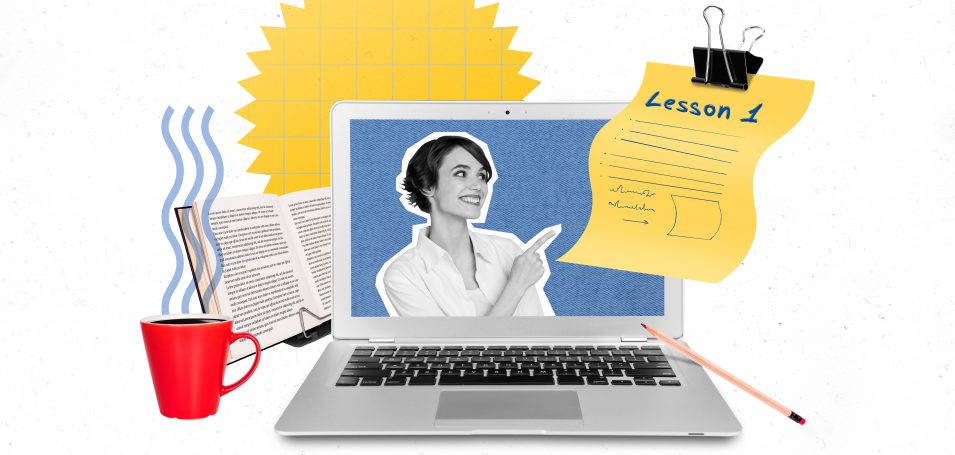Today’s education doesn’t happen in a controlled classroom setting, and your customers are no different. In any audience, you’re likely to have learners who are starting from zero, as well as those who are moving towards mastery with your product. The simple truth is, when you educate people, you don’t always know where they are on the customer journey.
Creating content for both experts and novices isn’t always simple. Balance is key, because you don’t want to leave beginners in the dark, but you also don’t want experts to feel patronized. Here are seven tips for getting into the mindset of the beginner, and designing learning journeys that support those who are starting from scratch.
1. Remember, There’s No Such Thing as Easy
We’ve all had that experience where you’re sitting in a class, and a teacher or instructor throws out a concept and assumes that everyone in the class knows what they mean. Try to avoid the trap of assuming ‘everybody knows’ a topic or idea, or that a concept is easy. Your colleagues might be familiar with a foundational topic and throw it around in conversation with ease, but that assumption can’t extend to your learners.
However long you’ve been in the industry, take a step back and ask yourself, “What did people assume that I knew when I started out?” “Back then – what did I wish I knew already, but didn’t?” Then look at the content and ask yourself “What am I assuming my learners know already, and is that assumption fair?” Even a quick definition or description of a concept can make all the difference and allow learners to get comfortable with the content.
2. Watch Your Acronyms
The expectation that your audience is familiar with your terminology is often most obvious with the acronyms you use. I regularly see this in onboarding training, where it’s alphabet soup right left and center! Be conscious of throwing out acronyms without explaining what they stand for, and sometimes – what they mean, too. After all, if your audience doesn’t know what HTML is, then writing “HyperText Markup Language” in brackets is unlikely to help them that much.
Even if the acronym or phraseology isn’t fundamental to what you’re teaching, there is value in providing context. Without an explanation, your learner might feel a point of friction, which can lead to them clicking away from your content to learn what you mean, or simply feeling that your material isn’t suitable for them.
Defining concepts for the learner not only invites them into the club, but especially when it is fundamental to your product, it also puts a shared perspective in place. There are dozens of explanations of any given term or concept out there, but when you define the term, you set the language and the perspective for the learner.
3. Design for Rabbit Holes
In many cases, it’s easy to add a quick sentence or two to explain the example you’re using, or define your terminology so that newer learners feel confident. In some cases though, it might be more involved. Let’s say you’re presenting a course on psychology, and you use the simile, “responding like Pavlov’s dogs.” That’s not enough information for beginners, and may cause confusion if they haven’t heard of the study before! However, you only have your learner’s attention for a short amount of time, so it’s not ideal to describe the research in full, especially when a large part of your audience won’t need the refresher.
Here’s where offering optional rabbit holes can be really useful. Explain the example you’re giving by going further than a simple simile, perhaps saying “responding to a stimulus like Pavlov’s dogs were conditioned to respond to a bell”, and then include a link for anyone who is unfamiliar with the study. Providing the highlights and offering an optional resource ensures that no one is confused in the moment and keeps your expert’s time and attention in mind.
4. Define Your Audience(s)
Knowing your learner is an important part of creating impactful customer education. This is where context becomes really important. By thinking about learner personas and their goals ahead of time, you can isolate specific learners. For example, I’m currently creating a curriculum for customer education, and I know that some learners might be marketing or business experts, but know little about instructional design, while others will have spent years working with best-practices for design and teaching but be starting at zero when it comes to the business elements of the material.
Put yourself in the shoes of your audience, and consider what they already know, what they need to know, and the simplest way to bridge that gap without patronizing or alienating those who are already there. In this situation, where I can’t simply give a quick overview of foundational content, I might choose to allow learners to self-select a path, or offer an initial introduction to both topics that learners can skip if they already have a grasp of the basics. This is another way of being sensitive to the needs of the beginners or novices, without losing my experts, either.
5. Create Adaptive Learning Paths
In some cases, you might want to help customers to join the learning path at the optimal stage for them. An Adaptive Learning Path (ALP) can help you with this approach. You could start with a quick quiz; 10 simple questions to measure their level of familiarity with the content, and then set up the ALP to automatically assign content based on each learner’s quiz results. If they want a refresher, you can simply allow them to go back to an earlier lesson.
This approach also has the added benefit of providing valuable data on where your customers are starting from. You’ll be able to answer questions such as, What level of competency do learners tend to have when they start the course? If you find that 80% of people already have the foundational knowledge to start from lesson 3, that tells you a lot about what they’re picking up from onboarding, or regular product usage. On the flip side, if the vast majority need to start from your first lesson, you might want to create additional content to cover the basics in more detail, and see if that’s valuable to your learners.
6. Give Yourself a Break
All creative people are familiar with a flow state, where you’re so immersed in what you’re designing, you lose yourself in the creation. This can be a great feeling – but it can also mean you’re too involved to see what’s missing! When you look at something for too long, and especially when you’re very close to the project, you can end up subconsciously filling in gaps, assuming knowledge where it isn’t explicit, especially as you know how everything comes together. Remember, your learners won’t have this advantage.
If you have time, break the process up by stopping for a day or two, and then coming back and looking at it with fresh eyes. Check the content against your goals and see whether it accomplishes what you set out to achieve once you’re slightly further away from the point of creation. This is where you can identify gaps and fill them as necessary.
7. Get Reviewers in Place
Most important of all, make sure that you identify people who will be responsible for reviewing your content, whether they are internal or external to your organization. Choose 4 or 5 people who are in a similar position to your audience, or who are able to put themselves in those shoes and provide you with a swathe of perspectives. Tell them what your goals are, and explicitly say “I want to make sure I’m not losing my beginners – what do you think?”
This can also allow you to iterate your content before it goes live, based on real-world feedback. Your reviewers might say “I found this explanation unnecessarily long” or “This concept needs a more comprehensive explanation.” You might find they say things like “I think that you meant X by this part – am I right?” All of this feedback allows you to go back to the content ahead of time and make sure it’s optimized for beginners and experts alike.
Ready to start designing adaptive learning paths that suit anyone from zero to mastery? Get in touch to schedule a demo.


